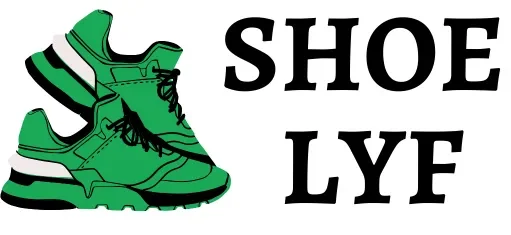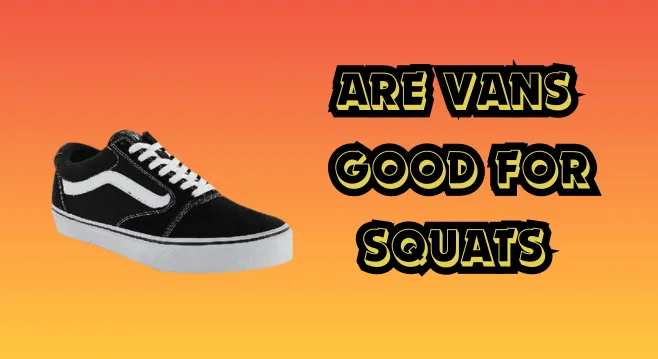As someone who loves hitting the gym and crushing those lower body workouts, you know the importance of having the right footwear for the job. Whether you’re a seasoned weightlifter or a beginner just starting your fitness journey, choosing the right shoes for squats can make a world of difference in your performance, comfort, and overall safety.
Enter the ever-popular Vans – the iconic skate shoes that have transcended their humble beginnings and become a fashion statement in their own right. With their sleek, minimalist design and cult-like following, Vans have found their way onto the feet of gym-goers and fitness enthusiasts alike. But the burning question remains: are Vans actually a good choice for squatting?
Before we dive into the nitty-gritty details, let’s first understand the importance of proper footwear for squats and why it matters.
The Importance of Proper Footwear for Squats
Squats are a compound exercise that engages multiple muscle groups, including your quads, hamstrings, glutes, and core. When performed correctly, they can be an incredibly effective exercise for building strength, improving mobility, and even boosting your overall athletic performance.
However, squats also place a significant amount of stress on your feet, ankles, and joints. Without the right footwear, you’re putting yourself at risk of injuries, poor form, and potentially limiting your progress.
Proper squat shoes should provide the following key features:
Flat, Non-Compressible Sole
A flat, non-compressible sole helps create a solid base for your feet, allowing for better stability and weight distribution during the squat movement.
Minimal Cushioning
While cushioning is great for running shoes, it can be detrimental for squats. Too much cushioning can cause your feet to sink into the shoe, compromising your balance and form.
Adequate Ankle Support
Squats require a certain degree of ankle mobility, and shoes with adequate ankle support can help prevent excessive rolling or instability during the movement.
Grippy Outsole
A good outsole with ample traction is crucial for maintaining a solid footing and preventing slips or slides during heavy squats.
Now that we understand the importance of proper footwear for squats, let’s explore whether Vans meet these criteria and are a suitable option for your lower body workout days.
The Case for Vans as Squat Shoes
When it comes to Vans, there are a few factors that make them a potentially viable option for squats:
Flat Sole
Vans are known for their flat, minimalist soles, which can provide a solid base for squatting. The lack of excessive cushioning or support can be seen as an advantage for some lifters who prefer a more “grounded” feel during their squats.
Affordable and Accessible
Let’s face it, dedicated weightlifting shoes can be expensive, and not everyone is willing or able to splurge on specialized footwear. Vans, on the other hand, are relatively affordable and widely available, making them an appealing option for those on a budget.
Versatility
Vans are incredibly versatile shoes that can be worn for various activities, including skating, casual wear, and even some gym sessions. If you’re looking for a shoe that can pull double (or triple) duty, Vans might be a viable option.
Grip and Traction
Many Vans models feature a durable, grippy outsole made of rubber or similar materials. This can help provide the traction and stability needed for squats, particularly on smooth or slippery gym floors.
The Case Against Vans as Squat Shoes
While Vans have their advantages, there are also some potential drawbacks to using them for squats:
Lack of Ankle Support
Vans are designed as low-top shoes, which means they offer minimal ankle support. During heavy squats, the lack of adequate ankle support can increase the risk of rolling or twisting your ankles, potentially leading to injuries.
Minimal Arch Support
Most Vans models are relatively flat, with little to no arch support. This can be problematic for those with flat feet or those who require additional arch support during squats, as it can lead to foot fatigue and potential discomfort.
Limited Durability
While Vans are generally well-constructed shoes, they may not be designed to withstand the rigors of heavy weightlifting. The constant impact and stress of squatting with significant weight could cause the shoes to break down faster than dedicated squat shoes.
Potential for Slippage
Depending on the specific Vans model and the condition of the outsole, there is a possibility of slippage during squats, particularly on smooth gym floors. This can compromise your stability and potentially lead to injuries.
Alternatives to Vans for Squats
If you’re not fully convinced that Vans are the best option for your squatting needs, there are several alternative shoes you may want to consider:
Weightlifting Shoes
Dedicated weightlifting shoes, such as those from brands like Adidas, Nike, or Reebok, are designed specifically for powerlifting and Olympic lifting. These shoes feature raised heels, metatarsal straps, and sturdy construction to provide optimal support and stability during heavy lifts.
CrossFit Shoes
Many CrossFit-specific shoes, like the Reebok Nano or Nike Metcon, can be suitable for squats. These shoes often have a flat, stable sole, minimal cushioning, and additional support features that cater to the diverse movements found in CrossFit workouts, including squats.
Minimalist Shoes
For those who prefer a more “barefoot” feel during their squats, minimalist shoes like Vibram FiveFingers or Merrell Vapor Gloves can be an option. These shoes mimic the natural movement of the foot while providing a flat, stable base for squatting.
Chuck Taylors or Other Flat Sneakers
While not specifically designed for weightlifting, classic flat sneakers like Converse Chuck Taylors or Vans Authentics can be a budget-friendly alternative for squats, provided they have a flat, non-compressible sole and offer adequate traction.
Tips for Using Vans for Squats
If you’ve weighed the pros and cons and decided to give Vans a shot for your squat sessions, here are some tips to help maximize their effectiveness and minimize potential risks:
Choose the Right Model
Not all Vans are created equal. Look for models with a flat, non-compressible sole, like the Vans Authentic or Vans Old Skool. Avoid models with excessive cushioning or raised soles.
Check the Outsole
Inspect the outsole of your Vans to ensure it has adequate traction and grip. A worn-out or slippery outsole can compromise your stability during squats.
Consider Insoles or Orthotics
If you require additional arch support or cushioning, consider adding aftermarket insoles or custom orthotics to your Vans. This can help alleviate foot fatigue and provide the support you need during squats.
Start Light and Gradually Increase Weight
If you’re new to using Vans for squats, start with lighter weights and gradually increase as you become more comfortable with the shoes. This will allow your body to adjust and help you identify any potential issues before going too heavy.
Listen to Your Body
Pay attention to any discomfort, pain, or instability you experience while squatting in Vans. If you notice any concerning issues, it may be time to switch to a more dedicated squat shoe.
FAQs about Vans and Squats
To wrap up this article, here are some frequently asked questions (FAQs) about using Vans for squats:
1. Can I use Vans for heavy squats?
While Vans can be suitable for lighter squat sessions, they may not provide the necessary support and stability for extremely heavy squats, particularly at higher weights or when nearing your one-rep max. For heavy lifting, dedicated weightlifting shoes or CrossFit shoes may be a better option.
2. Are Vans better for squats than running shoes?
Generally speaking, yes. Running shoes often have excessive cushioning and a raised heel, which can compromise stability and proper form during squats. The flat, non-compressible sole of Vans can be a better choice for squatting compared to many running shoe models.
3. Can I use Vans for front squats?
Front squats place additional stress on the ankle and knee joints, which may make the lack of ankle support in Vans a more significant drawback. While Vans can be used for front squats, you may want to consider shoes with more robust ankle support to reduce the risk of injury.
4. Do I need to wear squat shoes for every leg day?
Not necessarily. Many lifters alternate between squat shoes and more versatile training shoes, depending on the specific exercises and goals of their leg day routine. Vans or other flat sneakers can be suitable for exercises like lunges, calf raises, or leg presses, while dedicated squat shoes may be preferred for heavy compound lifts like squats and deadlifts.
5. Can I use Vans for other lifts like deadlifts or overhead presses?
While Vans may not be the optimal choice for heavy squats, they can potentially be suitable for other lifts like deadlifts or overhead presses, where ankle mobility and stability are less critical. However, it’s always important to assess your individual needs and prioritize proper form and safety during any lift.
conclusion
Remember, the right footwear for squats (or any exercise) is a personal choice that depends on your goals, preferences, and individual biomechanics. Don’t be afraid to experiment with different options and listen to your body to find the perfect fit for your lower body workout days.

